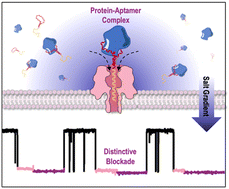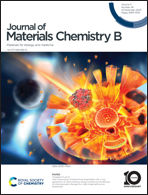An aptamer-assisted nanopore strategy with a salt gradient for direct protein sensing†
Abstract
Nanopore sensing is at the forefront of the technological revolution of the protein research field and has been widely used in molecular diagnosis and molecular dynamics, as well as for various sequencing applications. However, direct protein sensing with biological nanopores is still challenging owing to the large molecular size. Here, we propose an aptamer-assisted nanopore strategy for direct protein sensing and demonstrate its proof-of-concept utilities by experiments with SARS-Cov-2 nucleocapsid protein (NP), the most abundantly expressed viral protein, that is widely used in clinical diagnosis for COVID-19. NP binds with an oligonucleotide-tailed aptamer to form a protein–DNA complex which induces a discriminative two-level pattern of current blockades. We reveal the potential molecular interaction mechanism for the characteristic blockades and identify the salt gradient condition as the dominant factor of the phenomenon. Furthermore, we achieve a high sensitivity of 10 pM for NP detection within one hour and make a preliminary exploration on clinical diagnosis. This work promises a new platform for rapid and label-free protein detection.



 Please wait while we load your content...
Please wait while we load your content...